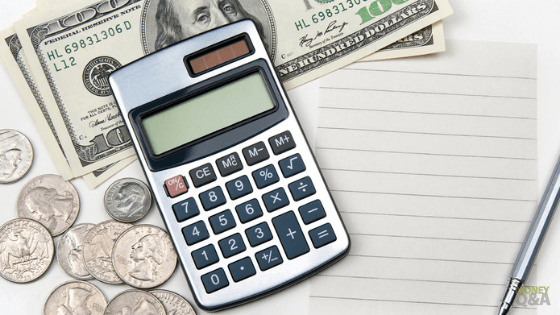
Budgeting can be a challenge for many people, even if you’re good with numbers and diligent about regularly tracking your income and expenses. Sometimes, life gets in the way, and the budget goes out the window, whether it’s due to an unexpected and costly emergency or an extended period of impulsive shopping and overspending. But, what do you do when your budget fails and goes off-kilter?
Steps to Take When Your Budget Fails
The first step to getting back on track with your budget is by recognizing there’s a problem. Denial can be a powerful defense mechanism against confronting a problem spending habit, so there’s no point in making excuses like “I’ll spend within my means next month” or “It’s just a few extra purchases here and there, no big deal.” Instead, the best way to revive your budget and mindset of financial accountability is by following the four steps below after your budget fails.
Assess: What’s Causing the Problem?
Acknowledging that you have a financial problem on your hands is a good start. Still, to achieve long-lasting results for your budget, you must determine what’s causing the problem to make meaningful progress towards resolving it.
There are many possible causes to going over-budget, particularly when it comes to impulsive shopping, which tends to be motivated by a desire for emotional gratification (and escape from negative emotions), FOMO (fear of missing out), a surplus of time, and limited self-control, and social comparisons that result in feeling inferior to other people who own more, nicer things than you.
Of course, going over budget isn’t always an issue of individual self-control. Perhaps you’re recovering from a large medical or veterinary bill, unexpected home repair cost, or other major expense that your emergency fund didn’t fully cover for whatever reason.
While these instances are certainly stressful – exacerbated by the lack of control you have over unanticipated incidents – there’s little benefit to letting stress take the wheel in getting your budget back on track. Instead, it would help if you acknowledged that a problem exists with your budget then proceed to the next step.

Evaluate: How Far Off Track Did Your Budget Go?
Now that you’ve recognized a problem with your budget and identified the cause(s), you should set aside time to analyze your income and expenses and calculate the extent of the damage. Are you only a couple hundred dollars off-track and able to bounce back within a month or two? Or are you thousands of dollars in debt and will need several months to get back to financial stability?
Your answer here depends on various factors, including your monthly net income, current debts, availability of cash savings deposits, additional income opportunities available to you, and discretionary spending levels. For instance, if you allocate a significant chunk of your monthly budget towards discretionary spending – entertainment, dining out, clothing, subscriptions, travel – then you could cut back on this expense category for a while and redirect those funds towards areas of your budget that need it the most.
Nobody enjoys cutting fun expenditures out of their budget, but remember, this is only temporary. Once you’re back on track with your finances – ideally with bigger emergency savings this time around – you can resume your favorite activities once more.

Create: A Detailed List of Expenses
If impulsive spending is the primary cause behind your over-budget situation, then you should immediately create a list of your expenses from the past several weeks (or months, depending on how long the spending problem has gone on). Questions to ask yourself during this phase include:
- What convinced you to buy these things in the first place? (e.g., were they urgent or necessary expenses, or did emotions motivate your spending decisions?)
- Which expenses were the least necessary? How reversible are they? (e.g., return or resell items, cancel subscriptions, etc.)
- Is everything already paid off or did you rack up credit card debt to pay for these items/services/activities?
- Does anything have a recurring cost associated with it? (e.g., monthly/annual subscriptions)
Eliminate: Impulsive Spending Temptations
Once you have a list of everything you’ve paid for recently – excluding non-discretionary expenses such as groceries, utilities, personal health items, insurance, etc. – it’s now time to determine how you’ll ensure this problem doesn’t happen again.
If you’re an impulsive shopper, there are a variety of solutions you could potentially use, such as switching to a cash-only budget, removing your credit card information from your web browser (and turning off any auto-pay features), blocking websites you’re most tempted to buy from, creating a visual goals board to increase your motivation for long-term savings goals, and asking your partner or a trusted family member to help hold you accountable while you develop better personal financial management habits.
Even if you’re thousands of dollars in the hole, you can get back to financial stability and mindful budgetary management by first recognizing the problem, evaluating the causes of said problem, and putting in the time and effort to overcome any barriers in your way.
Going substantially over budget isn’t always an issue of individual failure to rein in one’s spending, but regardless of the causes, getting your budget back on the right track requires diligence, patience, motivation, and good recordkeeping to achieve long-term success. A budget fail is not the end of the world if you take action to get it back on track.

